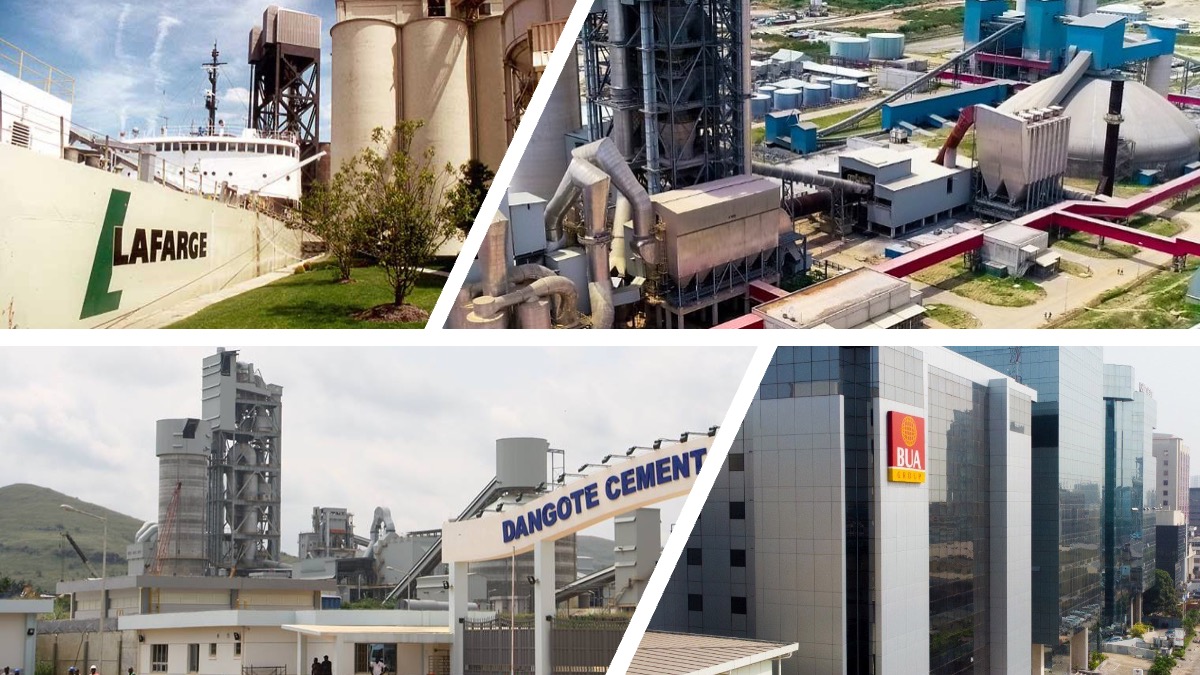Nigeria’s cement industry has long been a cornerstone of the nation’s economic development. Dominated by major players like Dangote Cement Plc, BUA Cement Plc, and Lafarge Africa Plc, the sector has experienced rapid expansion driven by infrastructure growth, urbanization, and industrialization. However, recent developments have raised questions about whether the industry’s growth trajectory is sustainable. Rising costs, market saturation, and regulatory pressures are just a few of the challenges threatening to slow the cement boom. This article explores these issues and their implications for Nigeria’s cement industry leaders.
The Rise of Nigeria’s Cement Industry
1. Growth Driven by Infrastructure and Urbanization
- Over the past two decades, Nigeria’s cement industry has grown exponentially, with annual production capacity increasing to over 60 million metric tons.
- Major infrastructure projects, such as highways, bridges, and airports, have fueled cement demand.
- Urbanization and housing development continue to sustain long-term demand for cement products.
2. Dominance of Local Players
- Protectionist policies, including high import tariffs, have encouraged local production.
- Dangote Cement’s vertical integration and large-scale operations have set benchmarks for efficiency and profitability.
- BUA Cement and Lafarge Africa have also carved out significant market shares by focusing on regional markets and sustainability initiatives.
Key Insight: The cement industry’s rapid growth has been driven by strong demand and strategic investments by market leaders.
Challenges Facing the Industry
1. Rising Production Costs
- Energy Costs: Cement production is energy-intensive, and reliance on diesel generators due to Nigeria’s unreliable power supply inflates costs.
- Raw Material Prices: Increasing costs of raw materials like limestone and gypsum erode profit margins.
- Logistics: Poor infrastructure raises transportation costs, particularly for companies serving remote regions.
2. Market Saturation
- With installed capacity exceeding local demand, the Nigerian market risks oversupply.
- Price competition among industry leaders compresses margins, particularly for smaller players.
- Export markets, while promising, face logistical and trade challenges.
3. Regulatory Pressures
- Stricter environmental regulations require investments in green technologies, increasing operational costs.
- Multiple layers of taxation and bureaucratic bottlenecks create financial and administrative burdens.
4. Currency Volatility
- The depreciation of the naira raises the cost of imported machinery, spare parts, and energy inputs.
- Currency fluctuations also impact the profitability of export operations.
Key Insight: The industry’s profitability is being squeezed by a combination of internal and external pressures, requiring strategic adjustments by market leaders.
Responses from Industry Leaders
Dangote Cement Plc
- Efficiency Gains: Investments in automation and alternative energy sources aim to reduce costs.
- Export Strategy: Dangote Cement exports to neighboring countries to mitigate the effects of domestic market saturation.
- Sustainability Initiatives: The company has implemented green practices, such as biomass energy usage, to align with global trends.
BUA Cement Plc
- Capacity Expansion: BUA Cement is focused on increasing production capacity in underserved regions.
- Green Energy: The company’s investment in renewable energy plants reduces its carbon footprint and operational costs.
- Regional Focus: By targeting Northern Nigeria and export markets, BUA maintains steady revenue growth.
Lafarge Africa Plc
- Sustainability Leadership: Lafarge’s low-carbon cement products and co-processing technologies set benchmarks for eco-friendly practices.
- Cost Management: Strategic partnerships and operational streamlining help minimize costs.
- Product Diversification: Specialized cement products cater to niche markets, such as high-strength and fast-setting cement.
Key Insight: Industry leaders are adopting diverse strategies to navigate the challenges of rising costs, market saturation, and regulatory pressures.
The Future of Cement in Nigeria
1. Infrastructure Opportunities
- Nigeria’s infrastructure deficit remains a long-term driver of cement demand, with projects such as the Lagos-Ibadan Expressway and Abuja-Kano Railway in progress.
- Government initiatives to address housing shortages will sustain demand for construction materials.
2. Export Growth Potential
- The African Continental Free Trade Area (AfCFTA) creates opportunities for Nigerian cement producers to access larger regional markets.
- Improved port infrastructure and trade agreements can facilitate exports to West and Central Africa.
3. Sustainability Trends
- The global push for green construction materials presents opportunities for low-carbon cement products.
- Companies that invest in eco-friendly practices are better positioned to attract environmentally conscious clients and investors.
4. Technological Advancements
- Smart factory technologies and automation can enhance efficiency and reduce costs.
- Carbon capture and storage (CCS) systems offer long-term solutions for reducing emissions.
Key Insight: While challenges persist, the industry’s long-term growth prospects remain positive, driven by infrastructure development, export opportunities, and sustainability trends.
Conclusion
Nigeria’s cement industry is at a crossroads. After years of rapid growth, the sector faces challenges that threaten to slow its momentum. Rising costs, market saturation, and regulatory pressures require industry leaders to rethink their strategies and adapt to changing market conditions.
Companies like Dangote Cement, BUA Cement, and Lafarge Africa have demonstrated resilience and innovation, positioning themselves to navigate these challenges and capitalize on emerging opportunities. For investors, the sector still offers attractive prospects, particularly for companies that focus on efficiency, sustainability, and export growth.
As Nigeria continues its journey of modernization and industrialization, the cement industry will remain a cornerstone of the nation’s economic development. However, its future success depends on the ability of market players to adapt to evolving demands and overcome the challenges ahead.

Leave a Reply